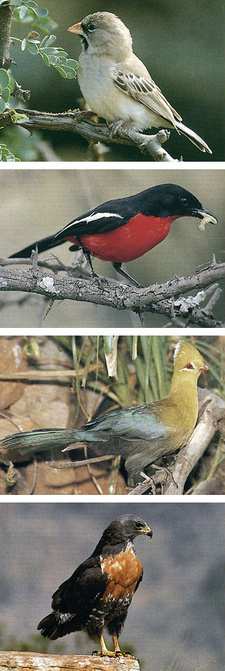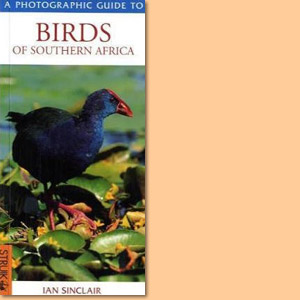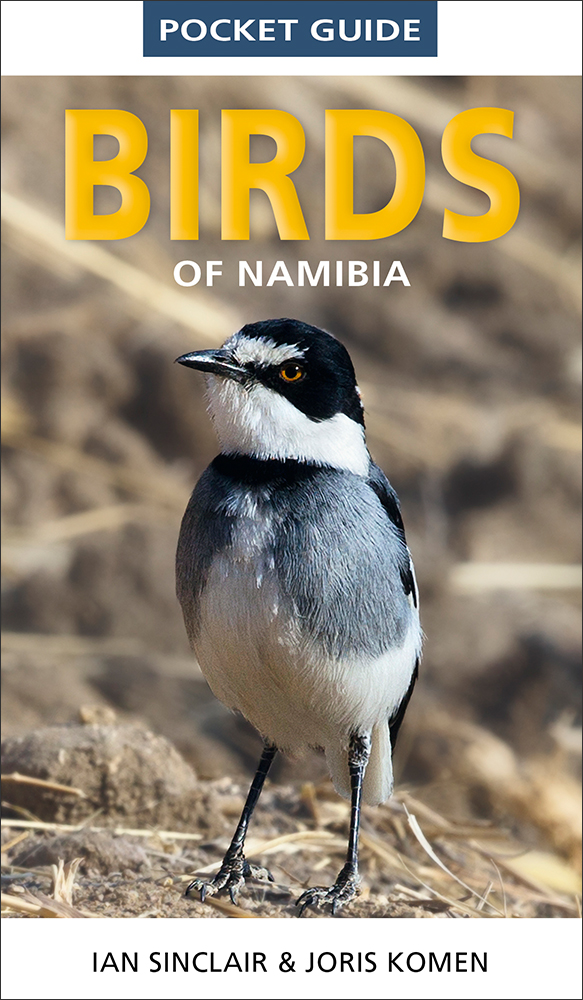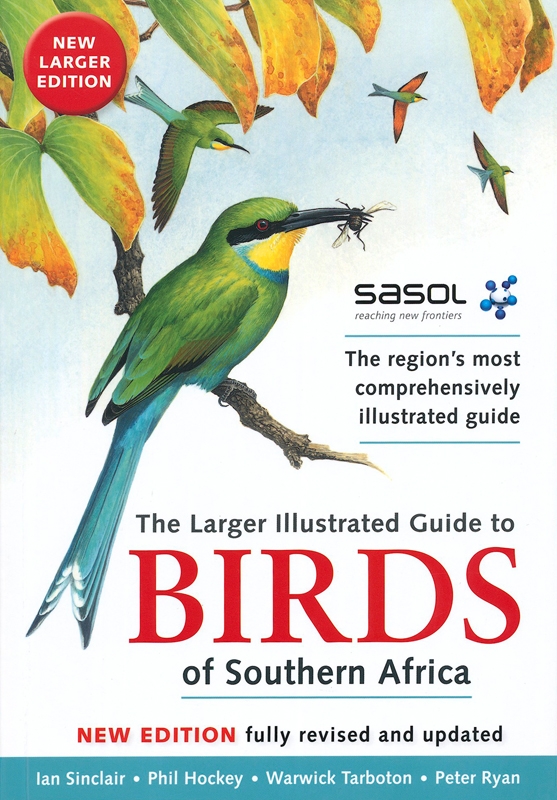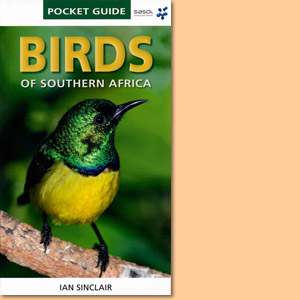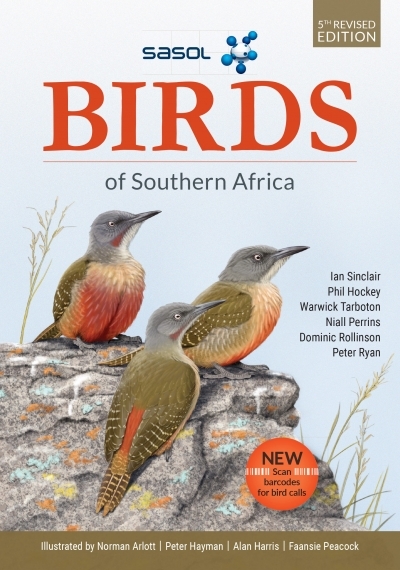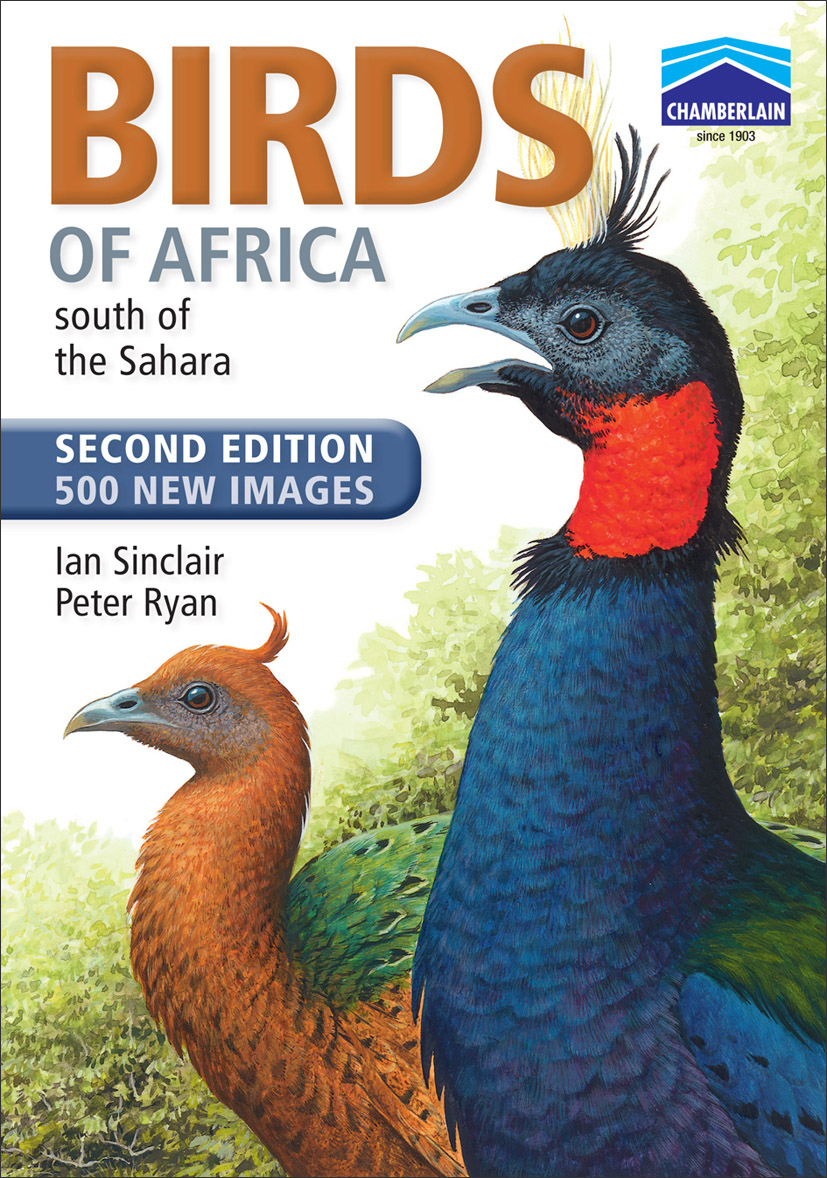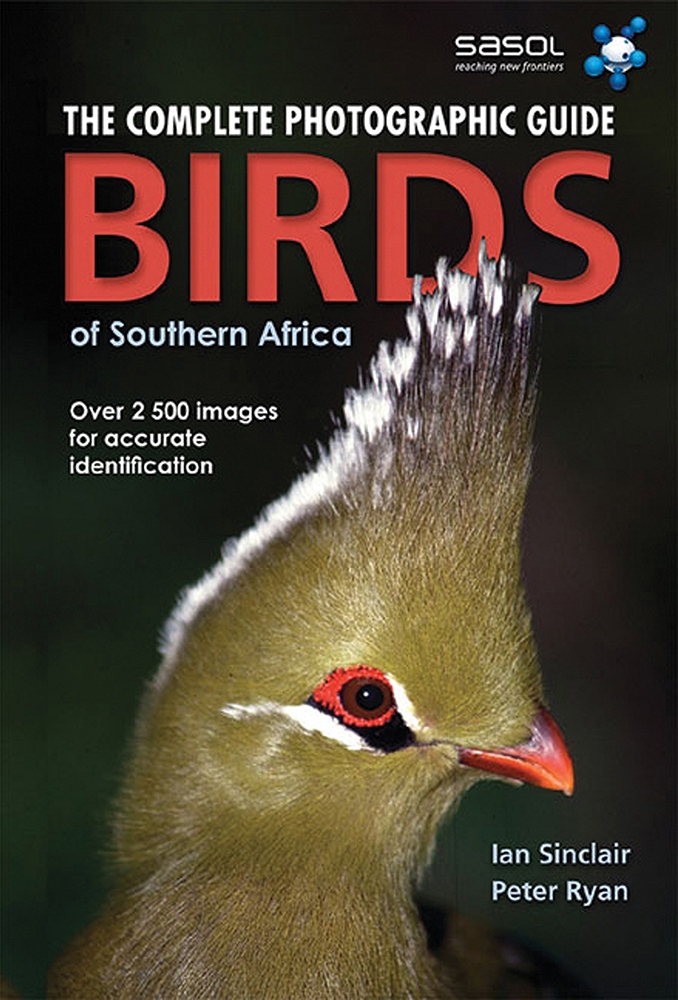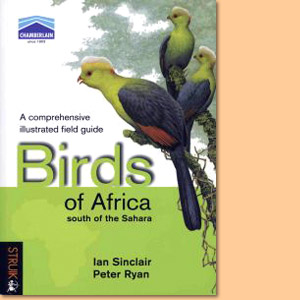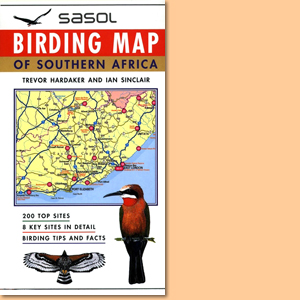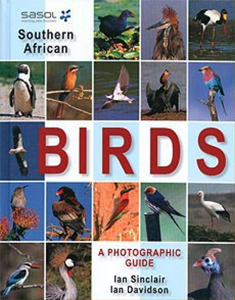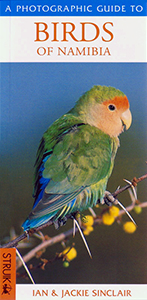A Photographic Guide to Birds of Southern Africa, by Ian Sinclair
Ian Sinclair's Photographic Guide to Birds of Southern Africa is a ideal pocket-sized birder's companion.
In the past few years bird-watching, or "birding" as it is now commonly referred to, has become one of the fastest developing pastimes throughout the western world. To accommodate this rapid development, a wide range of books has become available, covering most aspects of the topic but with field guides predominating. So why then yet another guide to birds? In the area that comprises the ornithological region of southern Africa (that is, the area south of the Zambezi and Cunene Rivers), nearly 900 species of birds are known to occur. However, as almost two-thirds of the species in this area are not common, have specialized habitat requirements, are extremely furtive and are thus difficult to find, or are virtually impossible to identify correctly unless one has years of experience, it is highly unlikely that one would see all these species. Many other species are only vagrants and have occurred fewer than five times and the chances of seeing these are remote. This leaves only a few hundred species that are seen frequently by the casual or novice birder. This book has been designed with this in mind: the 260 species selected are not necessarily the most common in southern Africa but they are the conspicuous birds and thus likely to be encountered most frequently. These are the birds that you can expect to see on a day trip to the coast, or in a nature or game reserve. By using this book in the field you should be able to identify the bird you have seen or be able to deduce to which family the bird belongs and then later to ident-ify the bird at home, using more comprehensive books. One of the main attractions of birding is that birds are a highly visual and appealing subject and they occur in virtually all habitats. Although most birds are very visible and many are abundant, it is not always that easy to identify them correctly. Familiarize yourself with the different species that appear in the plates by leafing through the book when you have a spare moment so that you will be able to recognize a species the first time you see it in the wild. Most of the birds in the book are easily recognizable in the wild but there are a few that require more skill to identify. Frequently a bird is not clearly seen, is seen only for a short period, or a feature on the bird may become exaggerated, possibly resulting in a misidentification. Avoid snap identifications: rather aim for sustained and better viewing to identify the bird. When confronted with a bird that is not instantly recognizable, first judge its size, then try to work out its general shape, colour pattern, the length of its tail, shape of its wings and every other detail which might be conspicuous. Often there is one striking feature that is sufficient to distinguish the bird, but sometimes it takes the combination of several features to make a positive identification.
In theory, the most satisfactory way to be certain of an identification is to photograph the bird and then, at your leisure, identify the bird from the photograph by consulting books or by showing the photograph to an expert. This may sound feasible but, in practice, the prohibitive costs of photographic equipment notwithstanding, taking the photograph requires a considerable amount of skill. A far better idea is to use a notebook and pencil and to jot down details of the bird you are watching and to make a rudimentary sketch showing the obvious features. From your notes and sketches the bird should be relatively easy to identify at a later stage.
Much has been written about the equipment necessary for birding and many of the books listed in the section on Further Reading contain sufficient detail to help you decide which binoculars, telescope, tape recorder and so on will best suit your purposes. There is also a book which suggests where and when to go birding in southern Africa. Many courses on bird identification are offered by different clubs, societies and universities and these will all help to hone your skills in the field. There is, however, no substitute for first-hand observation and the longer you spend in the field improving your abilities in the correct identification of birds, the greater will be your understanding of birds in general.
Example: Larklike Bunting (Emberiza impetuani)
It is the lack of any definite field characters in this drab and dowdy bird that points to its identification. It might be mistaken for a lark but it exhibits typical bunting behaviour, hopping over stones and grubbing around for seeds on bare ground. It is often flushed from road verges. It occurs in the drier areas and commonly frequents waterholes and livestock drinking troughs, sometimes in large numbers. Its contact call is a short 'tuc-tuc'. Found in dry rocky valleys, desert edge and open plains.
This is an excerpt from the book: A Photographic Guide to Birds of Southern Africa, by Ian Sinclair.
Title: A Photographic Guide to Birds of Southern Africa
Author: Ian Sinclair
Struik Publishers
4th edition. Cape Town, South Africa 2004
ISBN 9781770070837 / ISBN 978-1-77007-083-7
Softcover, 10x19 cm, 144 pages, throughout colour photos
Sinclair, Ian im Namibiana-Buchangebot
A Photographic Guide to Birds of Southern Africa
A Photographic Guide to Birds of Southern Africa is a ideal pocket-sized birder's companion.
Birds of Namibia (Pocket Guide)
Light and handy for use in the field, Birds of Namibia (Pocket Guide) will give birders an excellent introduction to Namibia's bird life.
Sasol Larger Illustrated Guide to Birds of Southern Africa
This new larger illustrated guide is based on the recently updated fourth edition of the standard-format Sasol Birds of Southern Africa.
Pocket Guide: Birds of Southern Africa
Pocket Guide: Birds of Southern Africa has been designed in pocket-size and primarily for use in the field.
Sasol Birds of Southern Africa
Sasol Birds of Southern Africa remains the region’s most comprehensively illustrated and trusted field guide.
Chamberlain's Birds of Africa south of the Sahara Edition 2010
Despite its exceptional coverage, Chamberlain's Birds of Africa south of the Sahara Edition 2010 is compact enough to use in the field, and follows the standard field guide format.
Complete Photographic Field Guide. Birds of Southern Africa
This complete photographic field guide to birds of Southern Africa describes and illustrates all 958 birds, plus 17 species from Antarctica and Southern Ocean Islands.
Birds of Africa south of the Sahara
Birds of Africa south of the Sahara provides unrivalled coverage of birds south of the Sahara in a single volume.
Sasol Birding Map of Southern Africa
Easy-to-use, illustrated map to 200 of the top birding sites in southern Africa.
Sasol Southern African Birds. A Photographic Guide
Sasol Southern African Birds represents one of the best collections of colour photography of Southern African birds and is a distinguishes photographic guide.
A Photographic Guide to Birds of Namibia
This photographic guide is a compact, easy-to-use guide to the most common birds of Namibia.

